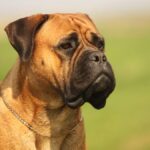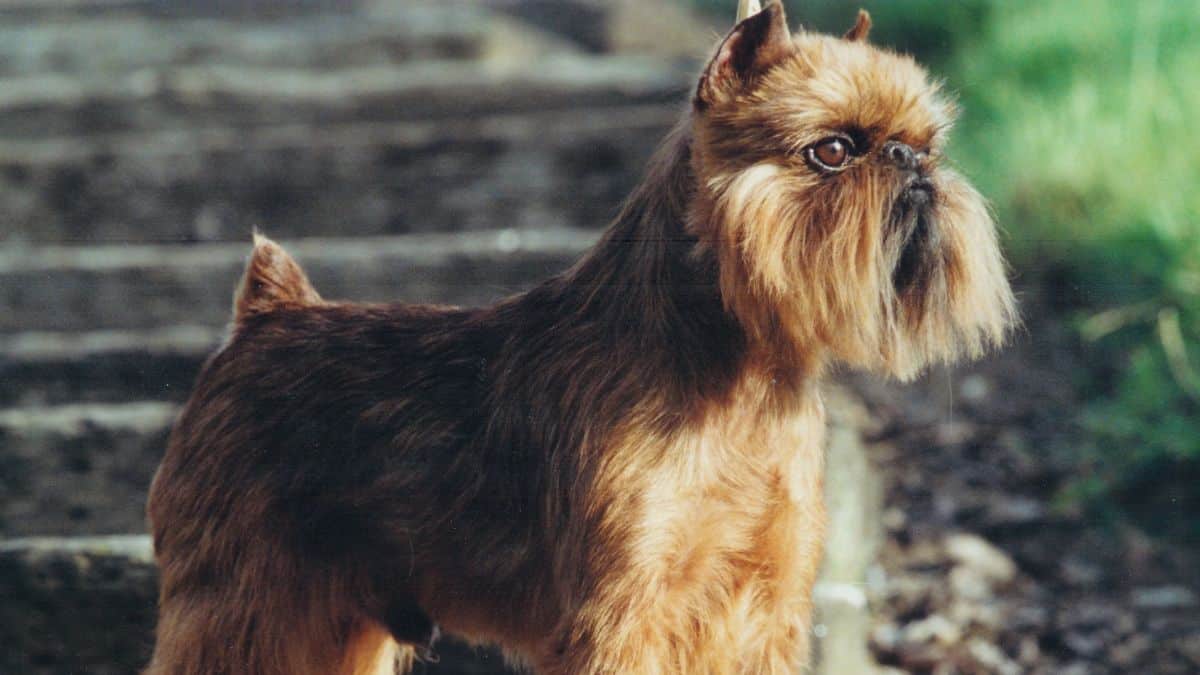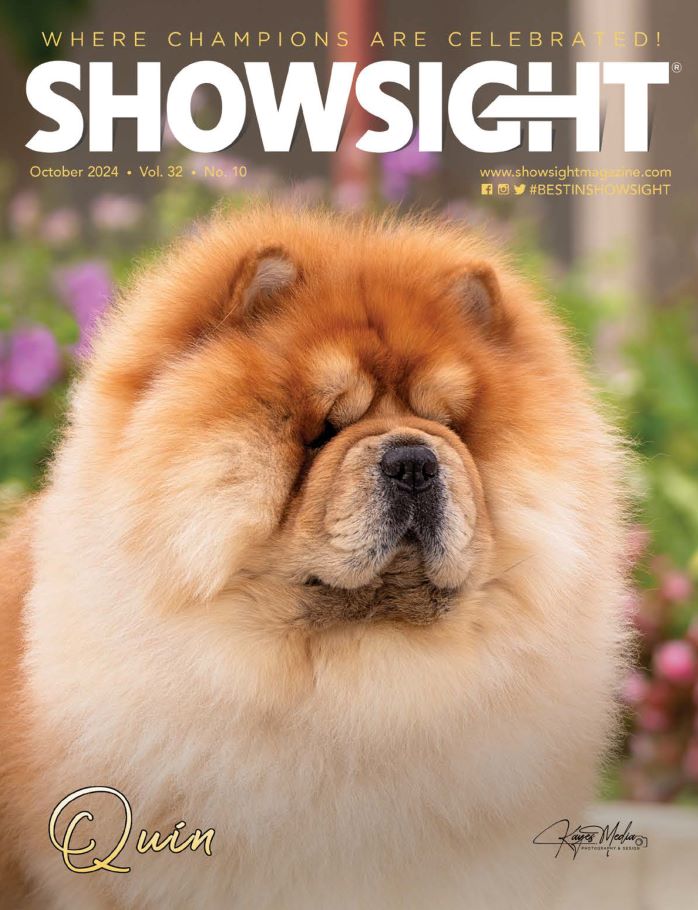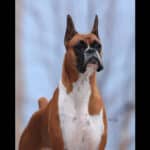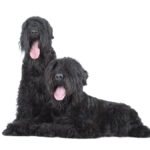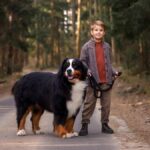Judging Brussels Griffons
When talking to people about what the judges are looking for in the Brussels Griffon ring, the most common answer will be: “It is a head breed.” They are commonly referred to as such because the head probably is the most endearing feature the Brussels Griffon has. The head represents 35 points out of 100 on the point scale. To quote Jeffery Bazell (breeder-judge): “A Brussels Griffon’s head is its crowning glory.” Jeff goes on to say, “…but only when found in combination with a well-balanced, cobby body.” That statement could not be truer. It is so important for a judge to judge the “full package.” The head, body, and movement make up the “full package.”
The AKC Breed Standard calls for a head with an almost human-like expression. The head is a very important feature. Eyes are set well apart, very large, black, prominent, and well opened. Eyelashes are long and black. Eyes should be edged in black. We are seeing Griffons in the ring with very little or no “eyeliner.” We are seeing a lot of small eyes in the breed and that is incorrect. Breeders should be breeding for proper eyes and judges should be looking for them.
Ears should be small and set rather high on the head. Ears may be shown cropped or natural. If natural, they should be semi-erect. Some will say they are “rose ears.” Rose ears, however, are not part of the Brussels Griffon Breed Standard in the United States.

The jaw must be undershot. The incisors of the lower jaw should protrude the upper incisors. Brussels Griffon’s should have black lips. I say that they should look like they are pouting. Neither teeth nor tongue should show when the mouth is closed. Judges should carefully examine the mouth. The undershot jaw can be checked without prying the mouth open. I prefer to have the judge ask me to “show them the bite.” IF the judge prefers to examine the bite, they should be very careful not to close off the dog’s airways by covering or pushing against the nose. They can actually check the bite visually and, with just their fingertip, lift the lip. The lower jaw is prominent, rather broad, with an upward sweep. A wry mouth is a serious fault. Disqualifications are an overshot bite or a hanging tongue.
The heads usually get broader by the time the dog is mature and the under jaw will tilt up to its maximum potential, which should place the nose higher and in deeply between the eyes, forming a layback. The skull shall be large and round, with a domed forehead. The forehead shall not be flat. Judges should examine the head to be sure the groomer didn’t leave a lot of hair on the dog’s skull so as to make it look like it is domed.
A smooth Griffon shows everything it has. No cover-ups! What you see is what it is. A rough-coated Griffon with a good groomer can cover a lot of faults. I have seen pin heads look like they had large heads with domes when, in fact, it was just hair left longer and left in the shape of a dome.
The nose is very black and extremely short. When I bred my first two litters, I got “button noses.” I thought they were so cute. Then I really started studying other dogs in the ring, and the Breed Standard, and learned that the nostrils should be large. I like to see a nice-sized nose pad now, rather than the “button noses” I used to get. A Dudley or butterfly nose is a disqualification.
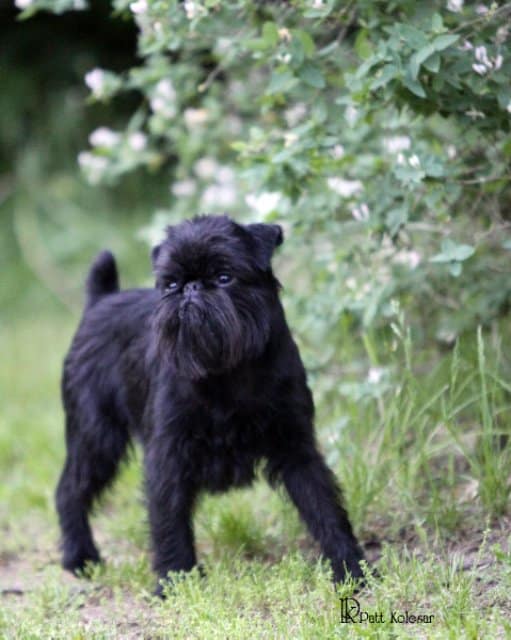
The body should be a thickset, short body. Brisket should be broad and deep, ribs well sprung. The Brussels Griffon is a slow-maturing breed. It usually takes the breed 2-1/2 years for the head to be fully developed and for the ribs to spring and the chest to drop to the maximum. The body that a judge sees in a youngster will be quite a different body in the same dog at maturity.
The weight is usually 8 to 10 pounds and should not exceed 12 pounds. There are larger dogs being shown, and the Standard says that type and quality are of greater importance than weight. There are also smaller dogs being shown, and the Standard states that a smaller dog that is sturdy and well proportioned should not be penalized. Let me make emphasis on the fact that the smaller dog should not have spindly legs and be stringy in appearance, nor shall the larger dog be built like a Border Terrier. Their bodies must be thickset, compact and with good substance. They must be well-boned; however, they must not be Terrier-type.
The neck should be of medium length with a graceful arch. The back should be level and short. The tail should be set high and held high. Our Standard states that the tail shall be docked to about one-third. There are dogs being shown with undocked tails. It is up to the judge’s discretion whether to use the dog or not. On the scale of points, the tail is grouped with general appearance (neck, topline & tail carriage). They count for ten points.
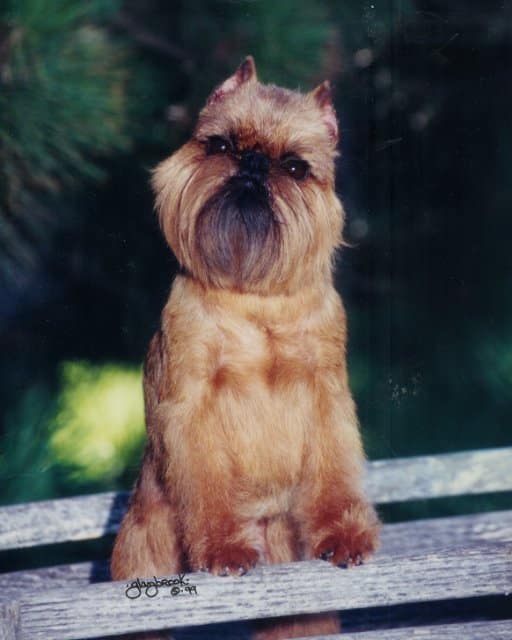
The forelegs are of medium length, straight in bone, well-muscled, and set moderately wide apart. The toes shall be well-arched and the feet round and small (almost cat-like in appearance). There should be balance between the front assembly and the width of the rear, and the shoulders should not look front-loaded and the overall picture should not be a pear-shaped body. The hind legs should be set true, with strong thighs that are well-muscled. Stifles are bent and hocks are well let-down. Both front legs and rear legs should not turn in or turn out.
There are two types of coat. The rough coat is a wiry and dense coat. We are seeing very short coats in the ring. The rough coat should be long enough for the judge to be able to examine the texture. Sometimes the beard and leg furnishings look sparse on a very harsh-coated Griffon. This is a proper coat. The soft coats will have what appears to be beautiful and full beards and furnishings. This is improper. The harsher the coat, the better it is. The rough coat is hand-stripped and there should never be scissor marks. The smooth coat is straight, short, tight, and glossy, with no trace of wiry hair. White hairs are a serious fault except for “frost” on the muzzle of a mature dog. A white spot or blaze anywhere on the coat is a disqualification.
The movement is a straightforward, purposeful trot, showing moderate reach and drive and maintaining a steady topline.
I will end with PLEASE JUDGE DOGS BY THE STANDARD and not what the current trend is. Some breeders will have several dogs in the ring that are of similar type. A judge might look at the quantity of dogs that look alike and discount the dog that is proper according to the Standard. If judges would judge by the Standard, it would force breeders to breed to the Standard.
Judging Brussels Griffons
by Carole Ross
(A version of this article appeared in the December 2017 edition of SHOWSIGHT.)
